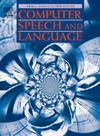原始声学-发音多模态困难语音识别
IF 3.4
3区 计算机科学
Q2 COMPUTER SCIENCE, ARTIFICIAL INTELLIGENCE
引用次数: 0
摘要
语言障碍语音的自动识别(ASR)具有挑战性。诵读困难的语音的声学特征是高度可变的,并且在语音符号之间往往很少有区别的线索。当单一声学模态不够时,多模态ASR利用来自其他模态的数据来促进任务。发音信息,它封装了关于语音产生过程的知识,可能构成这样一种补充情态。虽然多模态声学-发音ASR最近受到越来越多的关注,但结合真实发音数据用于困难语音识别的探索还不够。本文研究了多模态声学建模的有效性,将真实的困难语音发音信息与声学特征相结合,特别是原始信号表征,它比经典特征更具信息量,从而导致针对困难ASR的学习表征。特别是,开发了各种原始声学-发音多模态困难语音识别系统,并与具有手工制作特征的类似系统进行了比较。此外,通过使用称为最大关节运动范围(MAMR)的统计空间分布指标,系统地分析了发音困难和典型语音在发音信息方面的差异。此外,我们使用互信息分析来研究发音特征的鲁棒性和语音信息内容,为支持特征选择和ASR结果提供见解。在广泛使用的TORGO困难语音数据集上的实验结果表明,在经验发现的最佳融合水平上结合发音和原始声学特征可以获得显着的性能提升,使困难语音和典型语音的相对单词错误率(WER)分别降低7.6%和12.8%。本文章由计算机程序翻译,如有差异,请以英文原文为准。
Raw acoustic-articulatory multimodal dysarthric speech recognition
Automatic speech recognition (ASR) for dysarthric speech is challenging. The acoustic characteristics of dysarthric speech are highly variable and there are often fewer distinguishing cues between phonetic tokens. Multimodal ASR utilises the data from other modalities to facilitate the task when a single acoustic modality proves insufficient. Articulatory information, which encapsulates knowledge about the speech production process, may constitute such a complementary modality. Although multimodal acoustic-articulatory ASR has received increasing attention recently, incorporating real articulatory data is under-explored for dysarthric speech recognition. This paper investigates the effectiveness of multimodal acoustic modelling using real dysarthric speech articulatory information in combination with acoustic features, especially raw signal representations which are more informative than classic features, leading to learning representations tailored to dysarthric ASR. In particular, various raw acoustic-articulatory multimodal dysarthric speech recognition systems are developed and compared with similar systems with hand-crafted features. Furthermore, the difference between dysarthric and typical speech in terms of articulatory information is systematically analysed by using a statistical space distribution indicator called Maximum Articulator Motion Range (MAMR). Additionally, we used mutual information analysis to investigate the robustness and phonetic information content of the articulatory features, offering insights that support feature selection and the ASR results. Experimental results on the widely used TORGO dysarthric speech dataset show that combining the articulatory and raw acoustic features at the empirically found optimal fusion level achieves a notable performance gain, leading to up to 7.6% and 12.8% relative word error rate (WER) reduction for dysarthric and typical speech, respectively.
求助全文
通过发布文献求助,成功后即可免费获取论文全文。
去求助
来源期刊

Computer Speech and Language
工程技术-计算机:人工智能
CiteScore
11.30
自引率
4.70%
发文量
80
审稿时长
22.9 weeks
期刊介绍:
Computer Speech & Language publishes reports of original research related to the recognition, understanding, production, coding and mining of speech and language.
The speech and language sciences have a long history, but it is only relatively recently that large-scale implementation of and experimentation with complex models of speech and language processing has become feasible. Such research is often carried out somewhat separately by practitioners of artificial intelligence, computer science, electronic engineering, information retrieval, linguistics, phonetics, or psychology.
 求助内容:
求助内容: 应助结果提醒方式:
应助结果提醒方式:


